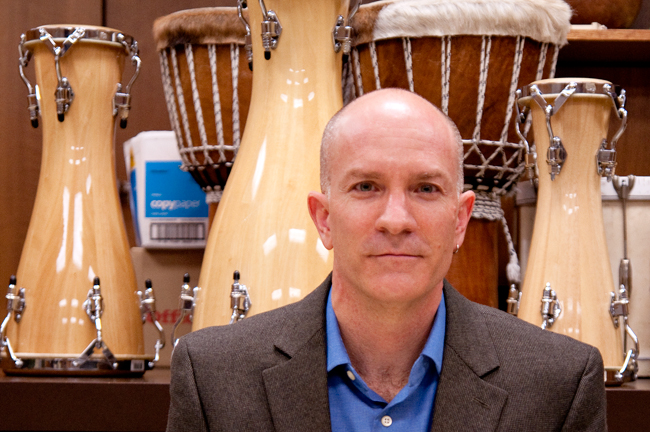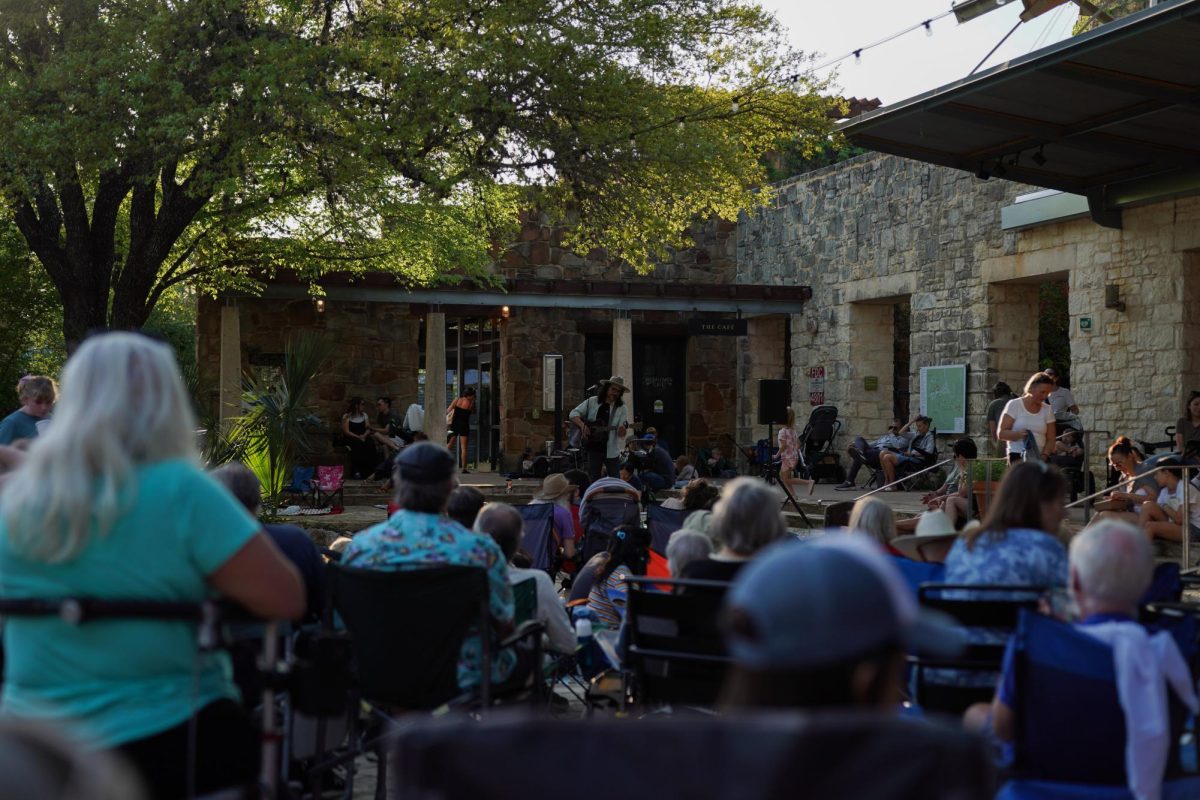Robin Moore has devoted his life to Caribbean music. Moore created the UT Hispanic Caribbean Ensemble to share his love of the culture with students from across the university.
“It’s always quite a mix. We sometimes get people from Latin America who know a particular style really well, but that’s the exception,” said Director Robin Moore, Professor of Ethnomusicology. “We usually get people who have ties to Latin America but don’t know very much about the music, or we get musicians who play an instrument but don’t know very much about this particular style.”
As the traditional Afro-Caribbean bata drums begin, the horn section blares a familiar tune. Changing tempo rapidly, the drummers control the dynamic piece, while the singers call out passionately in Spanish. Moore immerses himself in the music as he critiques the musicians for not enough punch.
With emphasis on quick loud bursts, Caribbean music has an infectious dance beat. Presenting a diverse repertoire of songs from Afro-Caribbean religious music to the traditional sones of the Caribbean, the ensemble teaches students from all backgrounds the intricacies of Caribbean music.
“The thing that was the most different from what I expected was definitely our bata piece,” Brian Griffith, a first-year masters student studying ethnomusicology. “It’s also been my most transcendental experience too because it’s the only piece I play percussion on, and when you play percussion you get into this different groove. It feels like time itself starts to change in a way that is really hard to describe but you can really feel.”
The Hispanic Caribbean Ensemble is both a class offered by UT and a performance group. The music combines elements of the commercialized pop music common in the United States and the traditional beats from Afro-Caribbean origins. The intermixing of musical patterns and rhythms creates a distinct blend of western and non-western ideas.
“I would say a lot of it is based on interlocking overlapping rhythmic ideas often in a cyclic form that repeats in variation. It’s just a very different way of organizing sound from what happens typically in European music,” Moore explained. “It’s interesting rhythmically, but it also incorporates elements of European harmonies. It represents a unique combination of western and nonwestern ideas.”
Moore stressed that there is no longer musical isolation. Music from around the world incorporates elements from different cultures and styles.
“There’s been a lot of musical exchange for a lot of years between the Caribbean and a bunch of different places including Spain and Europe, the United States and Latin American countries,” Moore said. “It’s almost as if there’s been so much mutual influence that they are all part of the same story. They aren’t even totally distinct anymore.”
Moore’s appreciation for the subtleties in each different style is indicative of the time he has spent in Latin America researching the music of Cuba and its impact on the people.
“You get a good understanding of all types of Latin music from rhumbas to merengue to salsa,” said Ricardo Alanis, an American Studies and Mexican American Studies junior. “We play some cumbias, and [Moore] is really good about explaining the cultural significance of each song. “
Attempting to bring a greater awareness to the commonalities in world music, the Caribbean Ensemble is participating in World Music Night, which features ensembles from across the university including the Middle Eastern Bereket, Mariachi Paredes, Tex-Mex Conjunto, and the Hispanic Caribbean ensembles. “I guess I’m always struck by…how much music and dancing are central to people. It’s very dynamic,” Moore said. “There’s also always an amazing gamut of different sounds from different kinds of drumming and African languages like Yoruba that doesn’t sound like anything we’ve heard to very catchy pop music to classical musical. The vibrancy and the diversity really strike me.”
Printed on Thursday, December 4th, 2012 as: Ensemble brings Caribbean flair




















